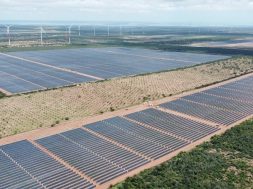
Australia’s Energy Guarantee Could `Decimate’ Wind, Solar: BNEF
Australia’s proposed National Energy Guarantee program could slash investment in large-scale wind and solar projects if the government fails to boost its 2030 emissions-reduction target, according to a report from Bloomberg New Energy Finance.
Prime Minister Malcolm Turnbull government’s goal of reducing emissions by 28 percent by 2030 only requires an additional 1.5 gigawatts of new large-scale renewables, according to an estimate by BNEF. That target “could decimate large-scale wind and solar construction” while a 45 percent reduction target advocated by the opposition Labor party would “continue the current boom,” it said.

“The National Energy Guarantee could be an effective and innovative policy mechanism, but if the target is weak, it will deliver little,” BNEF’s Australian head Kobad Bhavnagri said in an email.
Turnbull’s Liberal-led coalition government will provide information to the states on Friday in a bid to get them to back the National Energy Guarantee, which aims to bolster reliability of Australia’s faltering electricity grid. Australia’s six states and two territories will need to approve the program for it to function properly with a meeting of the Council of Australian Governments to be held Friday in Hobart to discuss the plan.
The Labor plan would require 17.3 gigawatts of large-scale renewables, according to BNEF’s modeling. The level of ambition by the nation’s political parties on emissions reduction targets will ultimately play a big part in determining the success of the government’s proposed energy policy, according to BNEF.
Turnbull on October 17 ditched plans to set renewable power targets as part of his latest policy to lower electricity prices and require generators to guarantee reliable supply and limit emissions. The government has argued that falling costs mean the technologies no longer need government subsidies to compete against traditional energy sources.
















